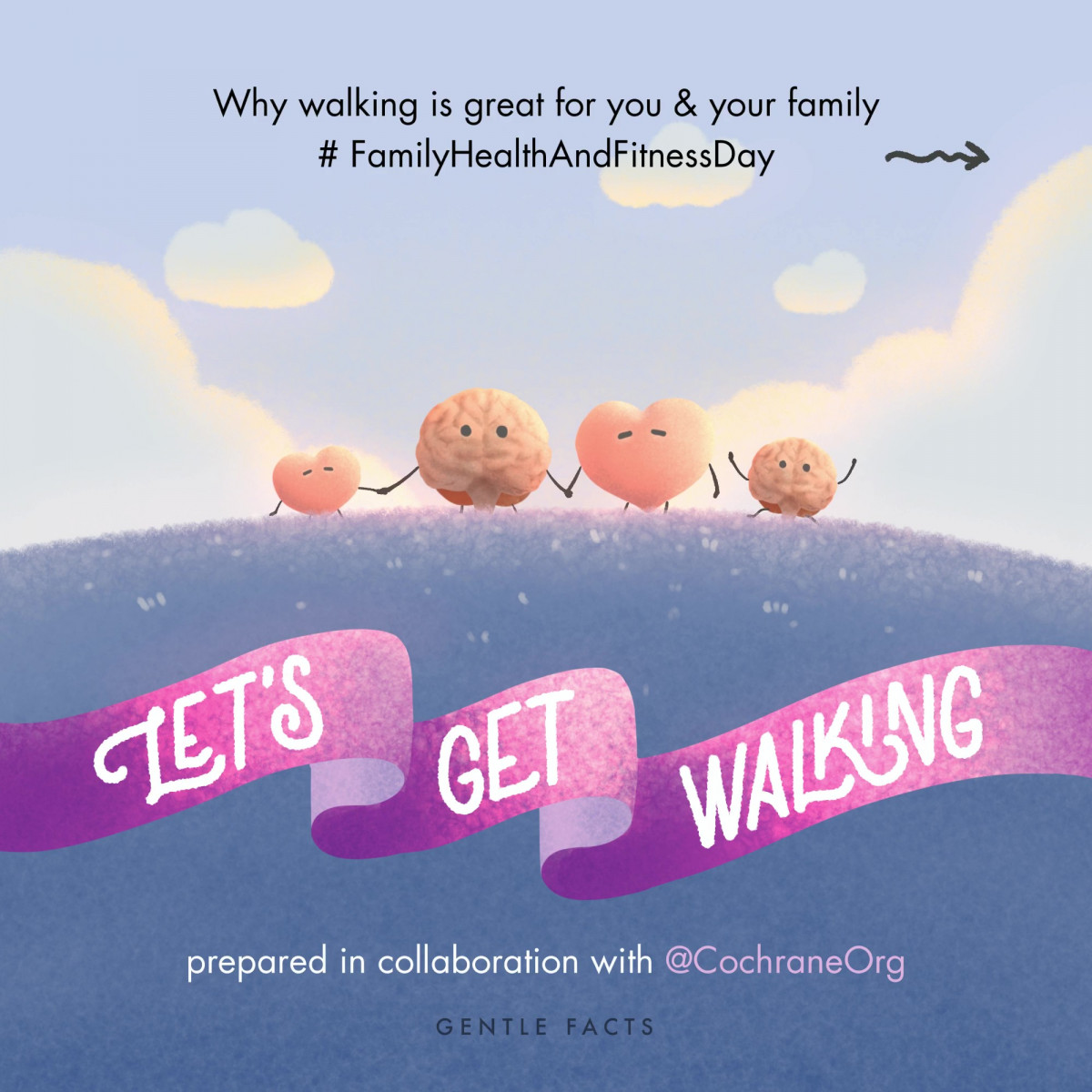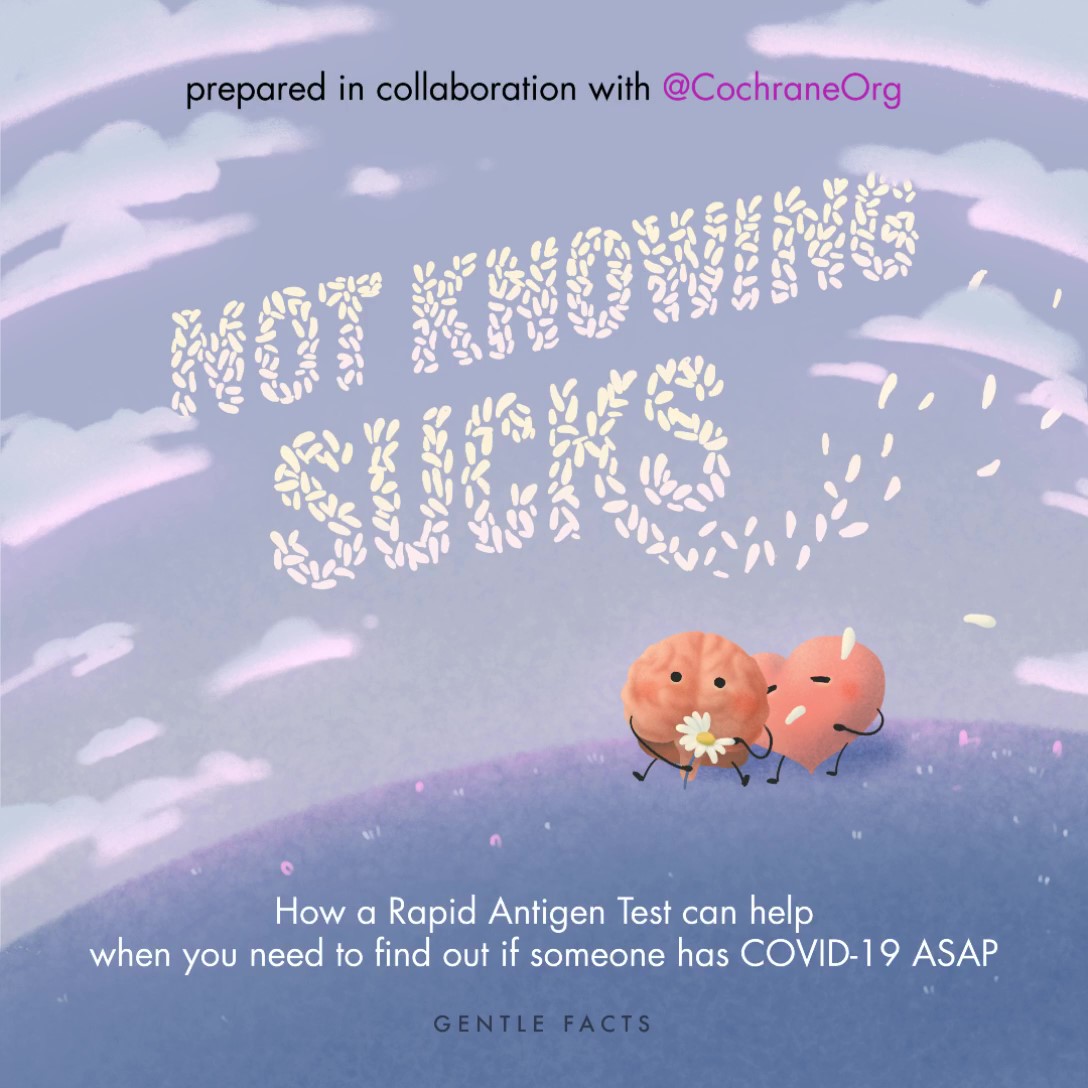
We chatted with Jen Ma of Gentle Facts about how art can help in communicating science and health evidence, the challenges involved, and her work to address these.
Can you tell us a bit about yourself and background?
My name is Jennifer Ma (I go by Jen). I am a researcher by training and did my PhD in the Stem Cell Bioengineering lab at the University of Toronto. I originally planned to stay in research and contribute to innovations in healthcare, but gradually discovered the crucial role of science communication to bring the existing body of knowledge to the public. Examples were all around me: friends were choosing alternative medicine over evidence-based treatments; unproven and dangerous “stem cell therapies” were masquerading as Regenerative Medicine and thriving; the anti-vax movement was gaining more followers by the day. I wanted to use my education, combined with my passion in visual arts, to fight misinformation and promote engagement with science. I also hope to reach an audience that might have been missed by traditional science media and connect with them at a human level. After finishing grad school, I am now focusing mostly on my science communication project Gentle Facts and loving every minute of it!

And how did Gentle Facts get started? Can you explain the focus?
I was finishing up my PhD thesis during the pandemic. It was a very stressful time so, to stay sane, I shielded myself from all other stressors from the outside world, including the constant bombardment of information about COVID-19 and the polarization of opinions online. However, being uninformed prevented me from doing my part as a citizen and a researcher/science advocate to fight the pandemic and other social issues, leaving me with feelings of guilt and powerlessness.
I saw that many others had similar sentiments: struggling to find a balance between staying in these important conversations and protecting our mental health. Gentle Facts is my attempt to be the solution, where we curate concise, actionable, evidence-based information and present them in an accessible way without drama. We hope that our mindful approach will lessen the mental toll and empower people to take informed actions more confidently.
What’s your goal for Gentle Facts?
Our main goal is to create social change through compassionate science communication. The current infodemic and increasingly hostile environment online means people are often talking over each other and nobody is actually listening. We believe an empathy-driven approach is necessary to facilitate constructive conversations and inspire positive actions. Gentle Facts creates a space where our audience’s emotions, especially those who feel drained and overwhelmed, are validated and cared for. We address their concerns through concise, evidence-based, and actionable information and empower them to create change together as a community.

You use art to communicate health evidence and science. What do you think about this intersection?
Appealing visuals really help catch people’s attention. But art can be so much more than just a “pretty face” for science content. Art is an amazing medium for expressing and evoking emotions. There is plenty of evidence that scientific facts and emotions both play an important part in our decision making process. Art and Science, therefore, work well together to connect, inform, and motivate towards common goals—what we aim to achieve at Gentle Facts. By relating evidence and emotions through art and compassion-driven communication, we hope to reach and connect with audiences who do support science but are usually disengaged.
What do you see as a challenge for evidence-based information on social media?
Social media is an interesting place where both good and bad are exponentially amplified. It can bring some people together while dividing others, provide high quality resources and spread misinformation on the same platform. Therefore, one critical piece of the puzzle is to boost the positive signals. Create evidence-based content that is engaging and sharable. Promote scientific and media literacy through education. Help people connect with each other by facilitating conversations and building communities. I believe with the right training, everyone can practice compassionate science communication, and we need all hands on deck to beat the infodemic.

 View these illustrations in a PDF
View these illustrations in a PDF
View and share on Instagram or Twitter
You illustrated the Cochrane review on walking for hypertension. Why did you pick this review and what did you want to get across?
I picked this review because it aligns very well with Gentle Facts’ principles: compassionate, factual, and actionable. It acknowledges and addresses the issue that exercising can be difficult for some people physically or mentally. The evidence collected is high in quality and includes participants with diverse backgrounds. It provides an easy-to-implement solution that most people can do. It is a great example of how evidence can empower people to take better care of themselves and contribute to public health.

View these illustrations in a PDF
You also recently illustrated a post about Rapid Antigen Tests, which included a Cochrane Review. We hear you have had to take this test; did knowing the evidence behind them help?
When I started feeling under the weather just 3 days before a flight, the Cochrane Review on Rapid Antigen Tests was the first thing that came to mind! Knowing the evidence really helped me set informed and appropriate expectations when I decided to take the antigen test for COVID-19. Being fully vaccinated, in Hong Kong where the infection rate was low, and always wearing a mask, my risk of getting COVID was very low. I had also scheduled a RT-PCR test on the day of my flight as per travel restrictions. However, I still wanted to know ahead of time if I had caught COVID so I could make plans accordingly, such as postponing my travel. Based on the Cochrane Review, I knew that getting a false negative result from the Rapid Antigen Test was quite possible. But if I were to get a positive result, it would mean I was likely infected—a bummer but important information that would allow me to take actions right away. Luckily, my results were negative for both the antigen and PCR tests, and I was able to board my flight feeling confident that I was not spreading the disease.
If you would like to learn more about Jen and Gentle Facts:
If you would like to learn more about knowledge translation and disseminating evidence at Cochrane:

